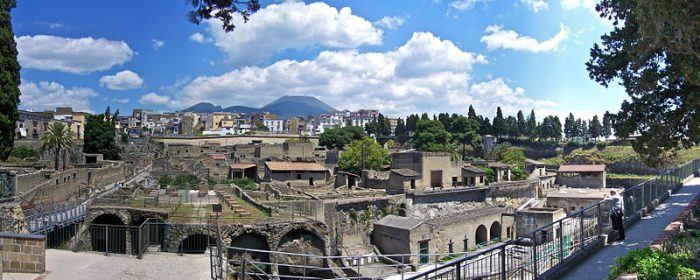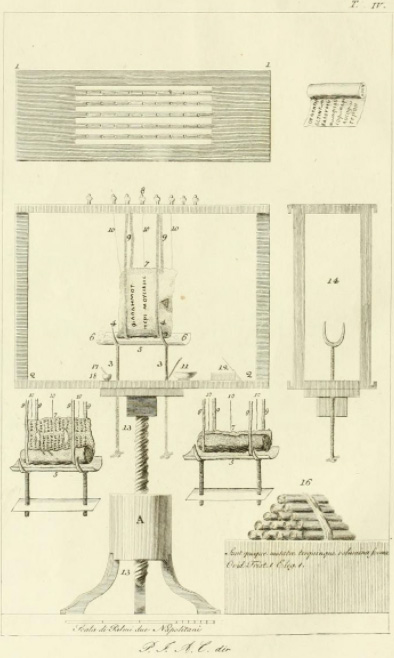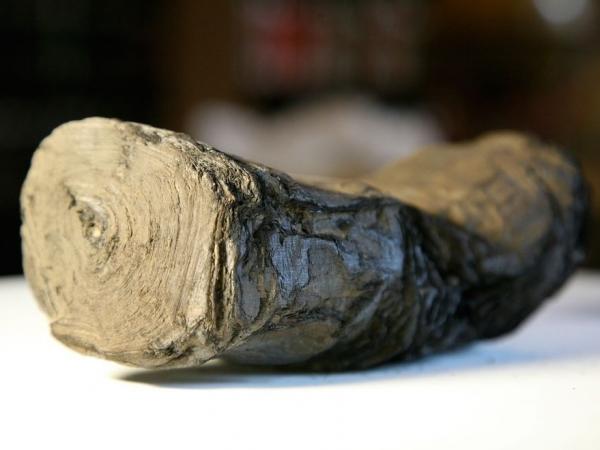A new device with light rays that are 100 billion times brighter than the Sun is being used to read 2,000-year-old papyrus scrolls burned by a volcano.
Called Diamond Light Source, it is a synchrotron light source that uses electromagnetic radiation and particle acceleration to create intense beams of light. It sounds complex, and it is. But if you think of it as one of the world's most powerful X-ray/flashlight thingies... it starts to make sense!

The Diamond Light Source building in Oxfordshire, England. (Wikimedia Commons)
Basically, this device slowly scans around a scroll while powerful light looks through it with atomic detail. Then a complex computer algorithm studies what is seen, hopefully turning it into recognizable ink.
It all sounds remarkable, but it does bring up a question. What can't we just unroll the scrolls?
The Herculaneum Scrolls

The excavated site of Herculaneum as it appears today. (Wikimedia Commons)
This technology is being used on a collection of papyrus scrolls — think rolled-up sheets of writing — called The Herculaneum Scrolls.
During the peak of the Roman Empire — around 2,000 years ago — papyrus was everywhere. It was the paper of these times, and made from the fibers of the papyrus plant. People used it to write down everything from poetry and stories to records of selling things like goats or horses.
These particular 1,800 or so scrolls were found in the ruins of the ancient Roman city of Herculaneum, which was destroyed in 79 AD by Mount Vesuvius. (This was the same eruption that destroyed the more well-known city of Pompeii.) When Vesuvius erupted, its sudden explosion covered Herculaneum under ash, rock, and rushing hot gases called pyroclastic surges.
But when the surges hit the towns, a curious thing happened to the thousands of scrolls there. Instead of burning them to ash, the intense heat immediately carbonized the papyrus, turning them into something like lumps of coal.
Saved but sealed

A plan for Abbot Piaggio's incredible (and incredibly slow) scroll unrolling machine. (Wikimedia Commons)
This did two things. Firstly, it actually preserved the scrolls, sealing its text within the layers of the carbonized scrolls. But, it also fused the scrolls together, making them near impossible to unroll.
Ever since the scrolls were gradually discovered by archeologists during the 1700s and 1800s, researchers have been desperate for a way to unravel them. In fact, as far back as 1756, Italian inventor Abbot Piaggio made a machine that took an incredible four years to unwrap a single scroll by barely moving it millimetres per day. Now that requires patience!
But overall, the papyrus is unbelievably delicate. Dozens of scrolls have been destroyed as researchers attempted to unroll them. And even if they stay intact, the ancient ink fades quickly once it is exposed to air.
This means that Diamond Light Source might end up being the best way to read these wonderful, but challenging texts. The technology isn't foolproof yet — the first tests are underway now on two scrolls. But it is maybe our best chance yet to read these unique pieces of history.
Happy reading, Diamond Light Source!
 One of the Herculaneum Scrolls. If you look closely, you can see all of the layers of these rolled-up sheets of papyrus. (Wikimedia Commons)
One of the Herculaneum Scrolls. If you look closely, you can see all of the layers of these rolled-up sheets of papyrus. (Wikimedia Commons)









